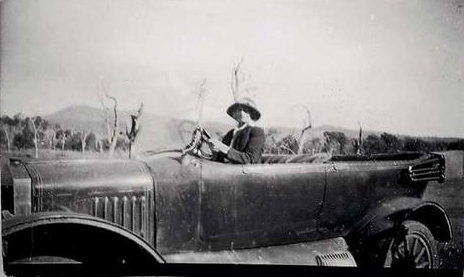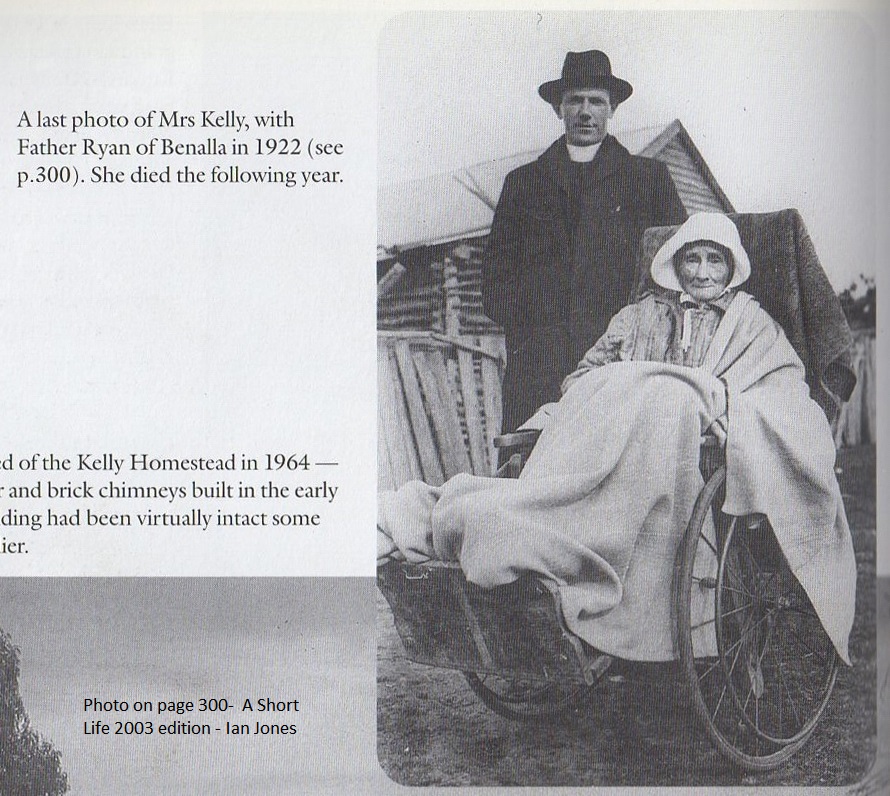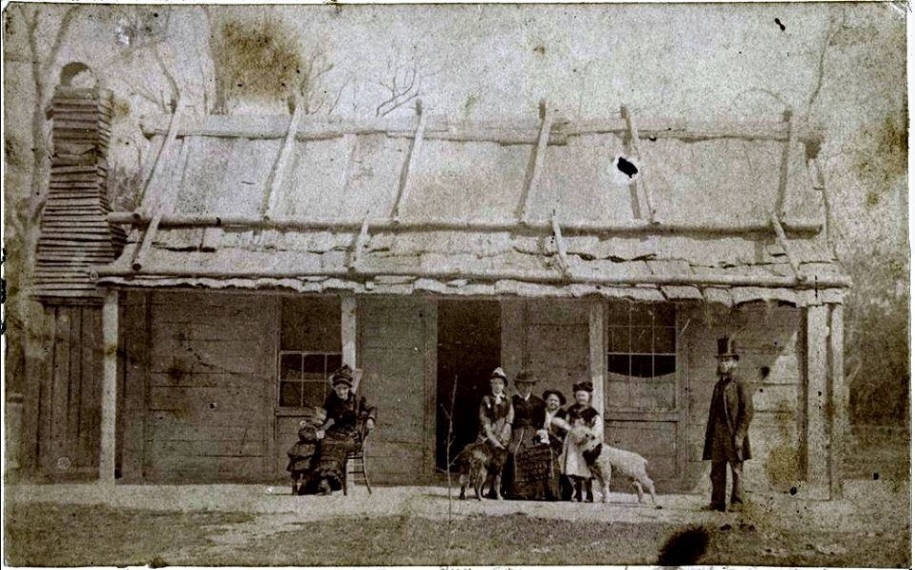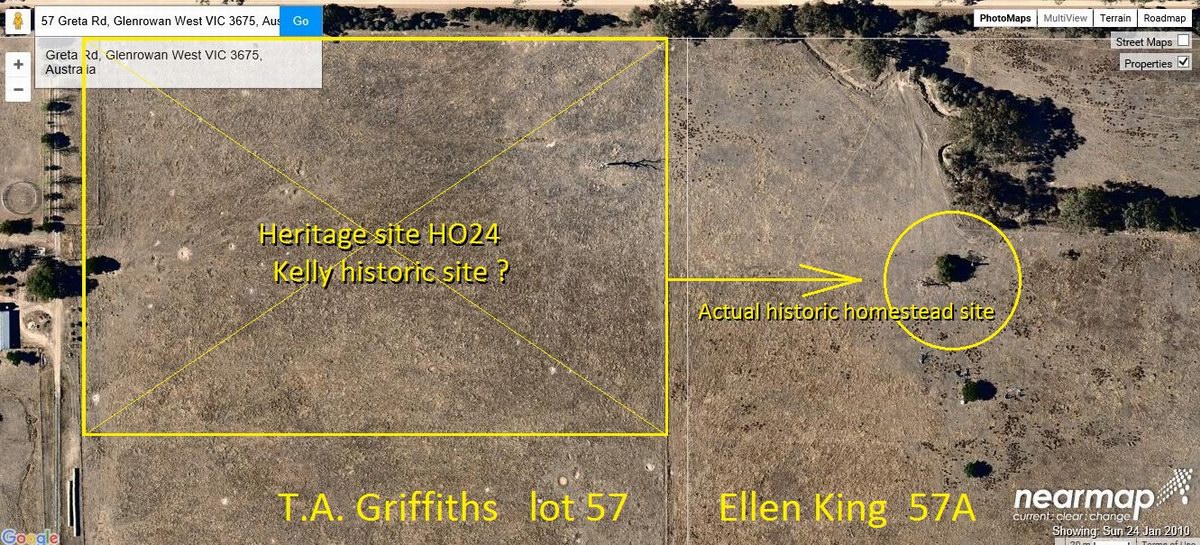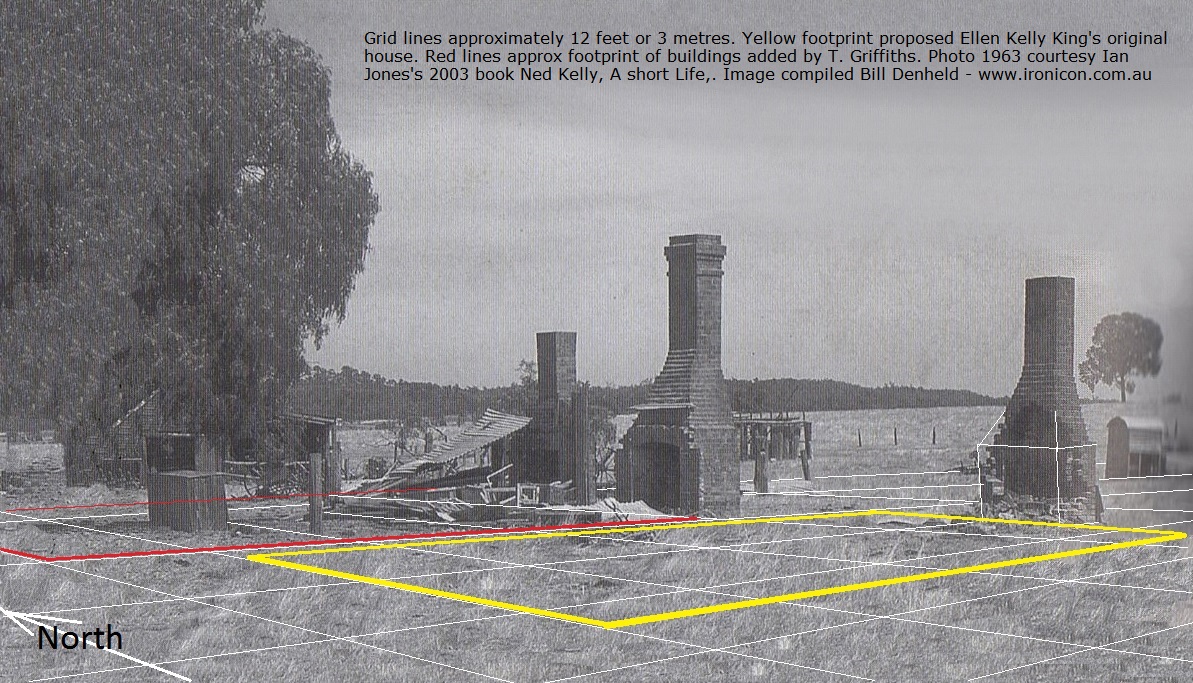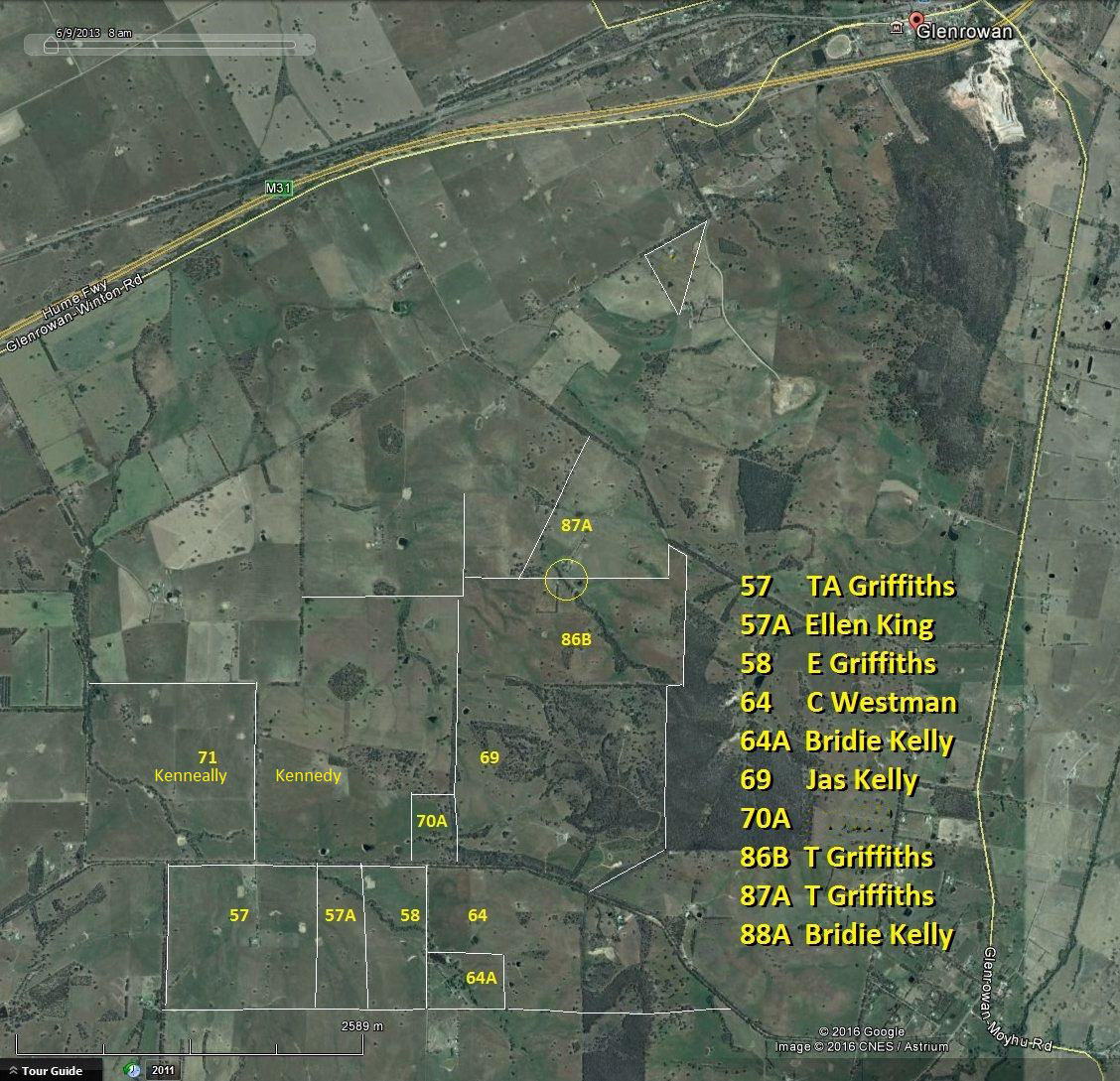| |
The Old Home
It was from this old home and these associations that Mrs Kelly
parted when she went to Melbourne gaol. It was in this home that
she saw her son, Dan, then only 18 years old, for the last time –
that is, if he really died in the Glenrowen Hotel. And it was there
that she saw Ned for the last time as a free man.
At the time of our representative’s visit, Mrs Kelly was, and
for some time previously had been, living in another cottage, also
at Greta West, with her remaining son, Jim, who is a bachelor and a
grey-bearded man now of 63. Between him and the aged mother there
was a strong affection.
“My chief concern,” he explained when the old woman was out of
hearing, “is to look after the poor old soul. She has been a great
mother to us all, and the least I can do now is to make her happy.”
And when Jim in turn was at a safe distance, the old mother
reciprocated: “Jim is just wonderful, a fine son! I want him to go
down to Wangaratta. He could earn a good living there as a
bootmaker. But he won’t leave me or the old home.”
The old home, as she called it, was not pretentious. It is a
small bush cottage with a creeper sprawling over the front verandah,
and a general air of being almost too languid to stand upright
against the ardours of the sun.
The kitchen was decorated with various photos. One was of the
late historic Kate, who became Mrs Foster, while another was that of
her son, Fred, who was killed in the Great War. There was also the
large photo of Ned Kelly, black hair and luxuriant black beard,
taken the day before his execution. Opposite to this, whether in
symbolic defiance or as a sign of amity it is difficult to say, was
a picture of King Edward, now some time deceased.
In the corner of this room, Mrs Kelly, who, by the way, was an
old-age pensioner, was accustomed to spend most of her time, being
able to walk only with the aid of a stout stick, which always stood
handy for her use. It was with this stick that she pointed to the
photo of her favourite boy, the one of whom she was still dreaming,
and mumbled:
“Ned was a great son. He was the only dark one of the
family. All the rest were red-headed. They took after their
father. But poor Ned was black like meself.”
Soul-Weary Age
And after some obvious remark as to Constable Fitzpatrick
being the cause of all the trouble, the poor old soul added, with
the philosophy of age:
“But what’s the use of going over it all? I’m an old woman,
and haven’t much more time to live.”
It was a soul-weary utterance.
After all, more than forty years had passed since as a woman
of fifty she had lain in Melbourne gaol. It was forty-odd years
since, on the very night when Ned and the others were holding up
Glenrowan, she had dreamed prophetically that the Gang had been
defeated by the bobbies.
|
Page 2
|
It was forty-odd years since, a day or two after this dream, a warder
had come to tell her that her boy was a prisoner lying badly wounded in
the same gaol as herself. It was forty-odd years since, in saying
goodbye to him the day before he was to be hanged, she had exhorted him
melodramatically: “Mind you die like a Kelly.” As though her offspring
had some secret recipe for a magnificent death.
In forty years even the fiercest of hereditary motives may grow
tame. She was well over ninety, and at such an age one might well be a
little soul-weary. Apparently Mrs Kelly was. But only apparently.
She was
persuaded to toddle outside, and, for the first time in those forty-four
years, to have her photo taken. It was done. Then, with almost
juvenile delight at the novelty, she agreed to be photoed once more,
this time seated at the steering wheel of a motor-car. Laughing as
heartily as her frail old body would allow, she made a remark which
conjured visions of this once-nerveless horsewoman driving a car, like a
horse, full at a five-barred
gate: “If I were young again, I’d give the world to own a car,
and the faster it went the better I’d like it.”
The Old Motive
In spite of her extreme age, her hollowed cheeks and sunken jaws,
there was a tilt almost of defiance about the poise of her head as she
said this, while the straight nose, the sharp firm moulding of the chin,
and a glance rather eagle-like from under the shadows of her brows, were
all harmonious with the fiery utterance. But that was not the only
flashing forth of the old tempestuous spirit.
Back in her corner within the kitchen, she showed that the
ancestral bias still lived. The occasion that revealed this was some
reference to the resemblance between young Fred Foster, who died as a
Digger, and Ned who died as a bushranger: –
“Yes,” she said. “Fred was a game lad. Just like his uncle.”
After a pause, and nodding her grey old head toward the outlaw’s
photo, she continued: –
“Ned would have made a great general in the war.”
There was another slight pause, and then as though quite
unconscious of the defiant significance of the words, she concluded: –
“A great general, no matter what side he had been on.”
So, at the age of 95, and with the old motive still tugging at her
thoughts, she died last week, a sad old figure deserving neither blame
nor praise. For she was the begetter neither of an heroic personage nor
of a criminal brood, but merely, by force of circumstance, the mother of
a tragedy.
Smith’s Weekly,
April 7, 1923.
|
